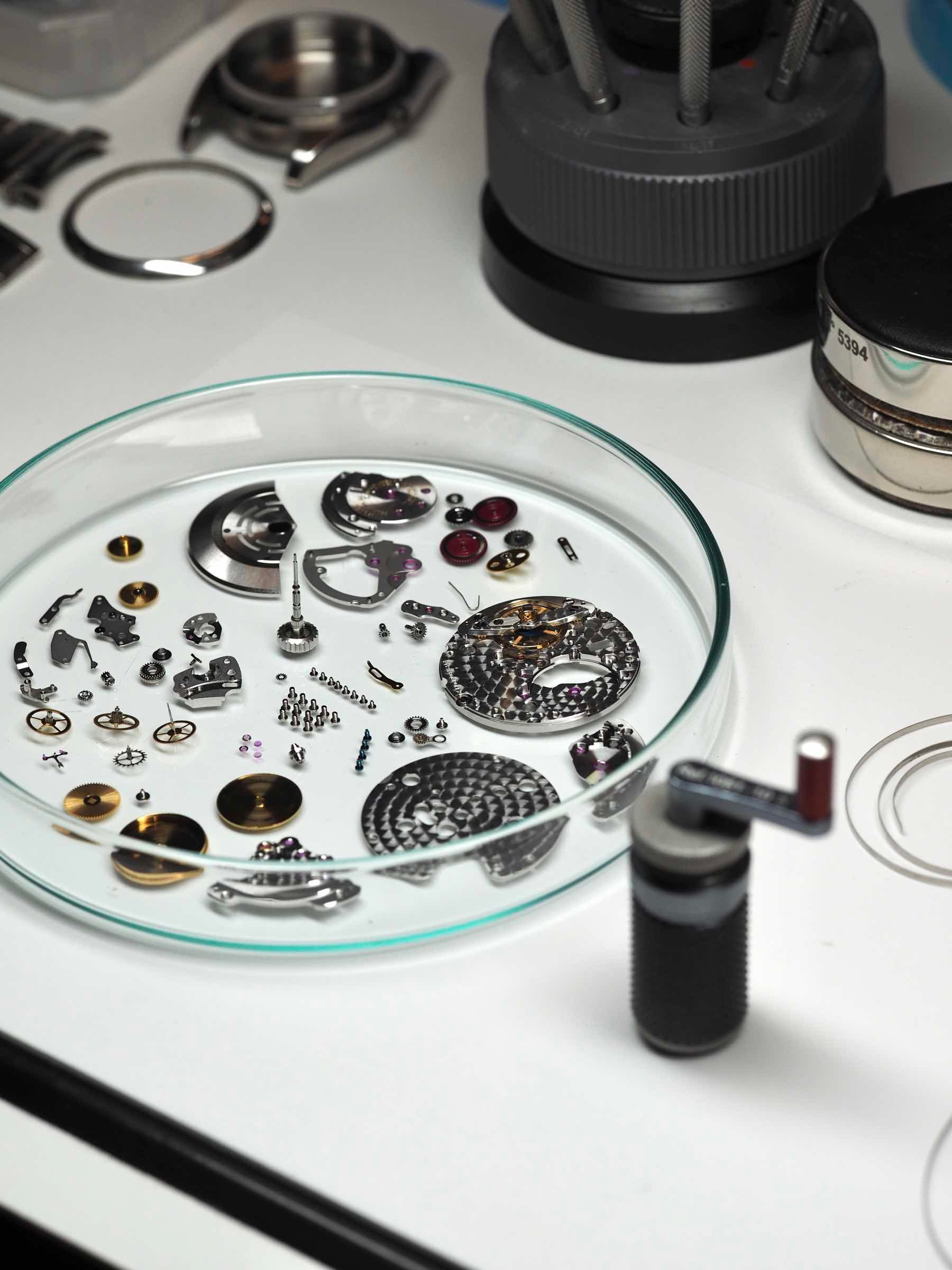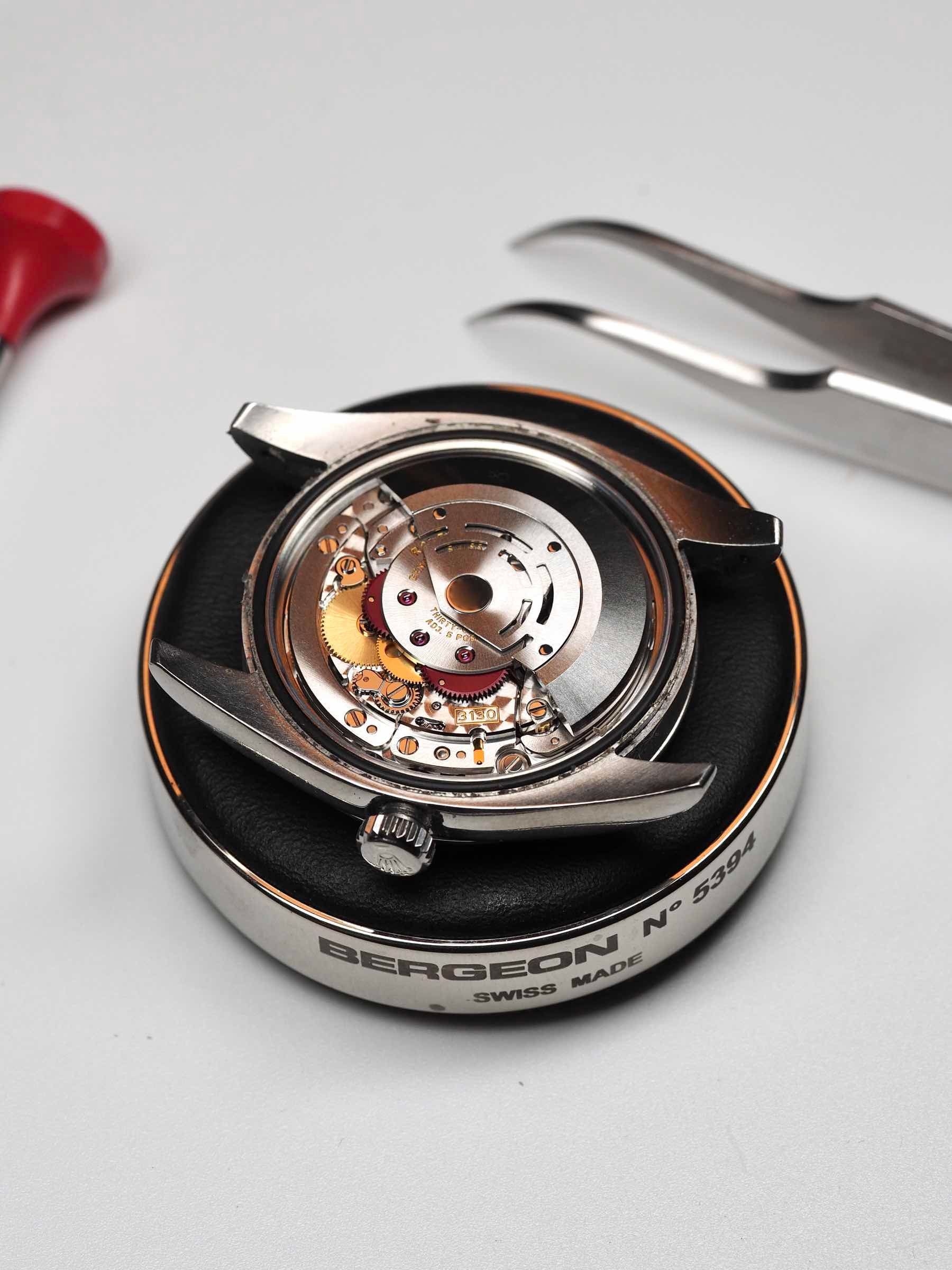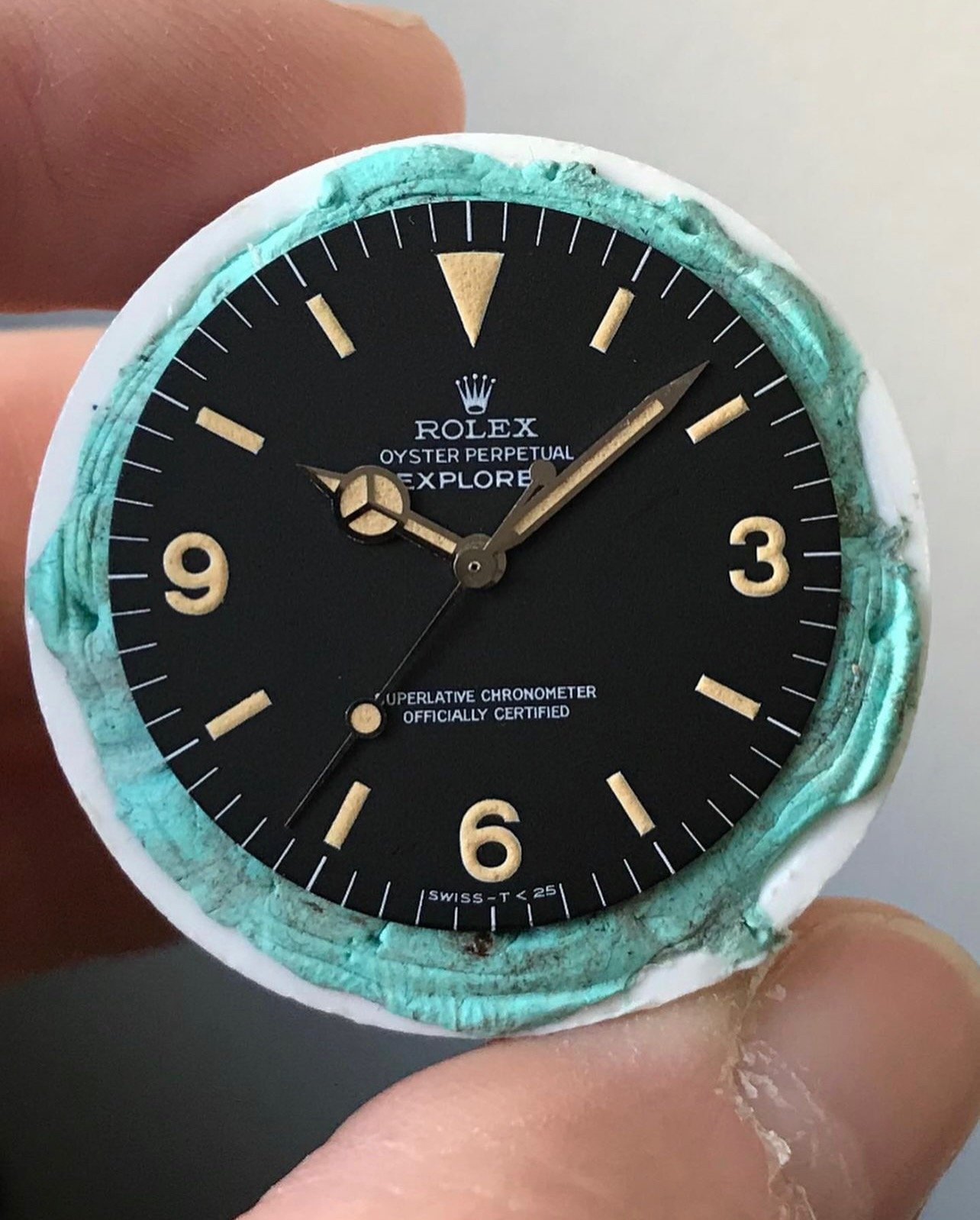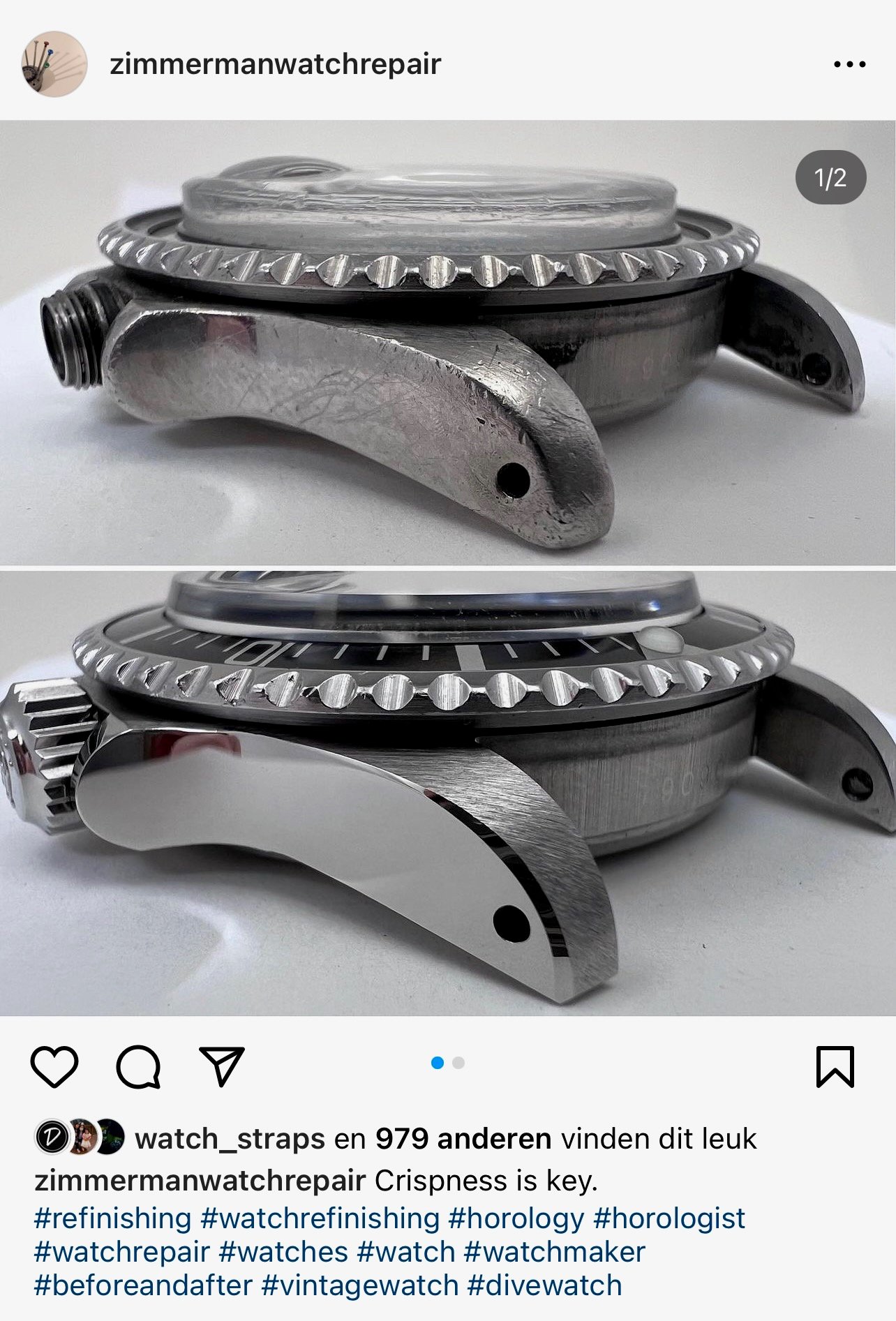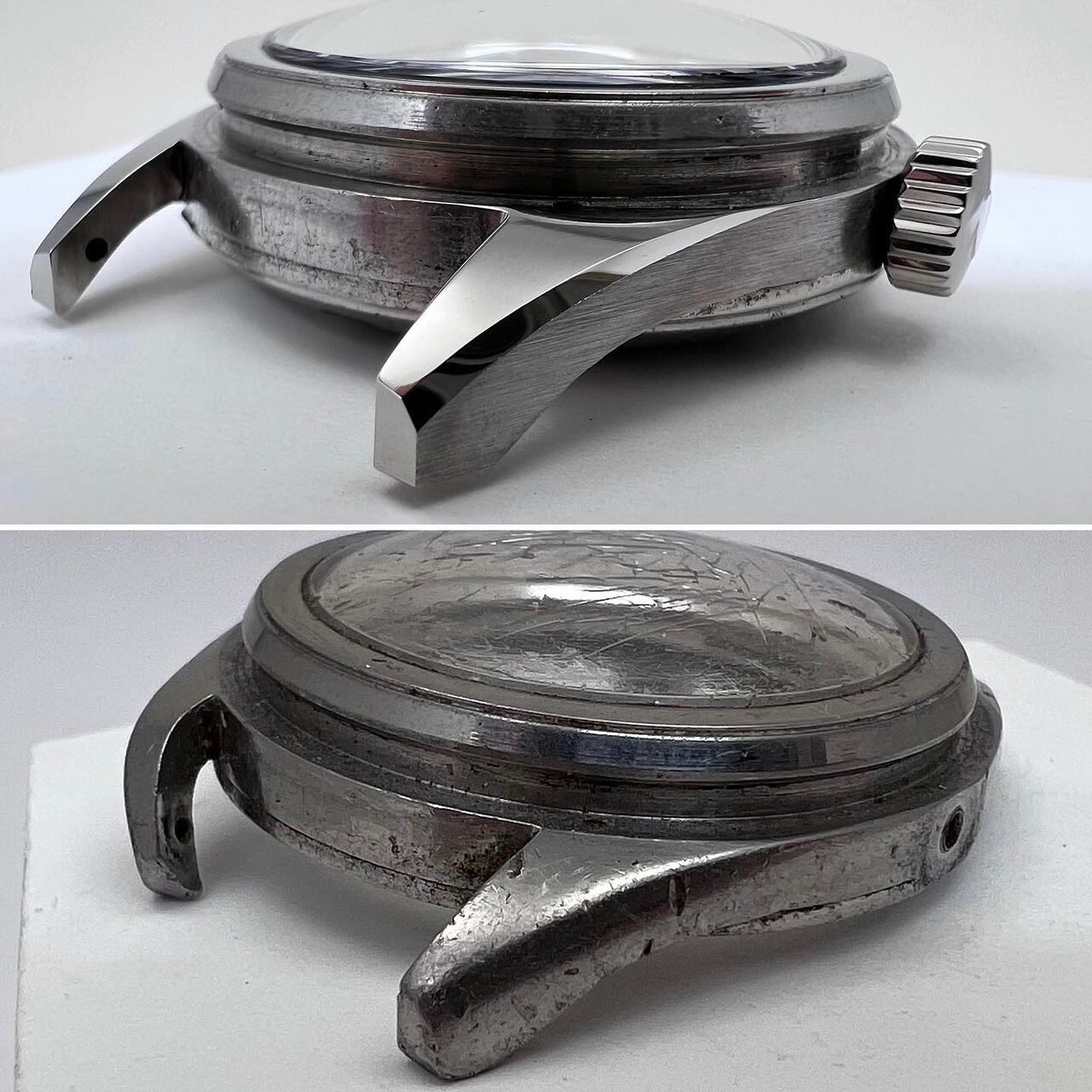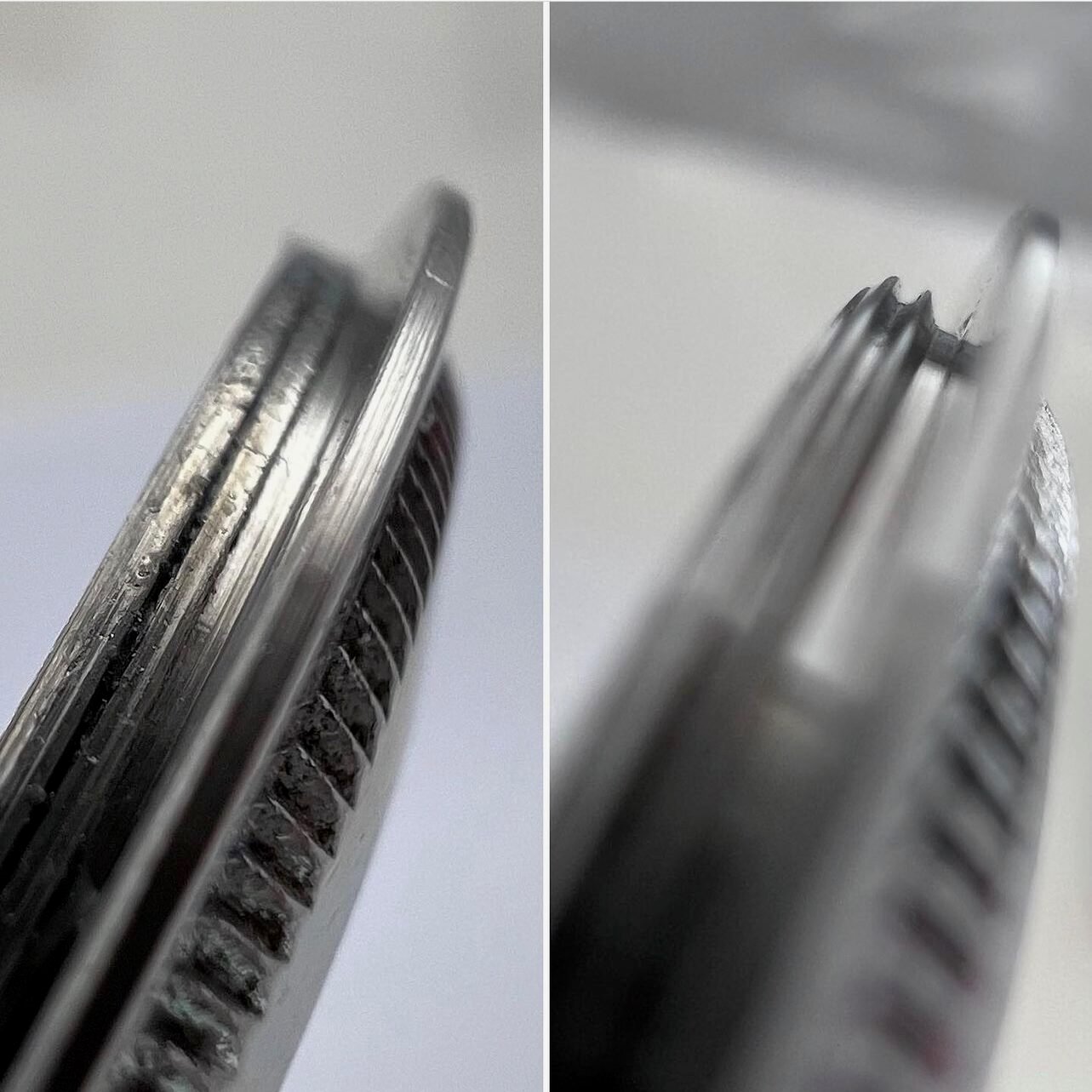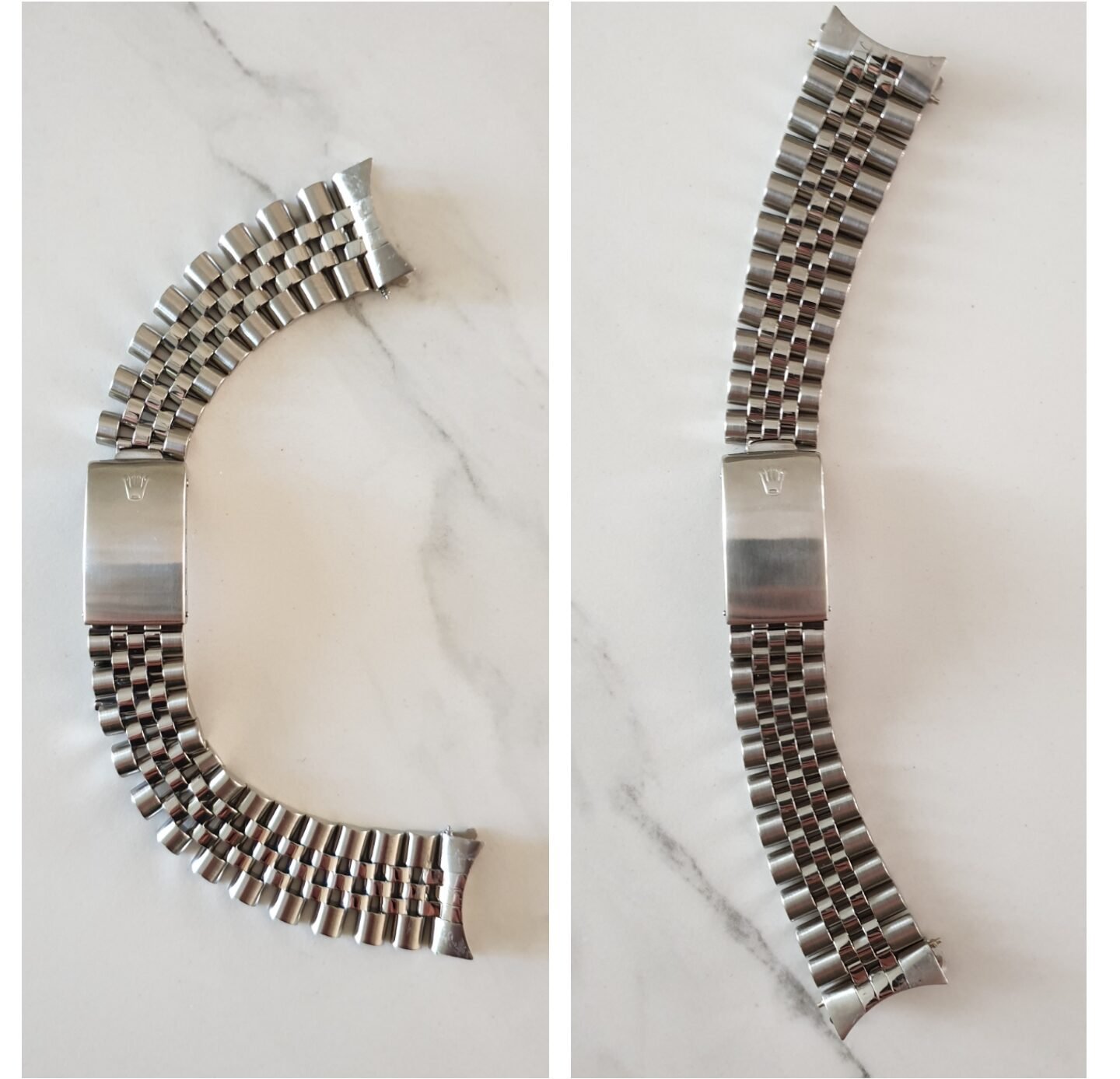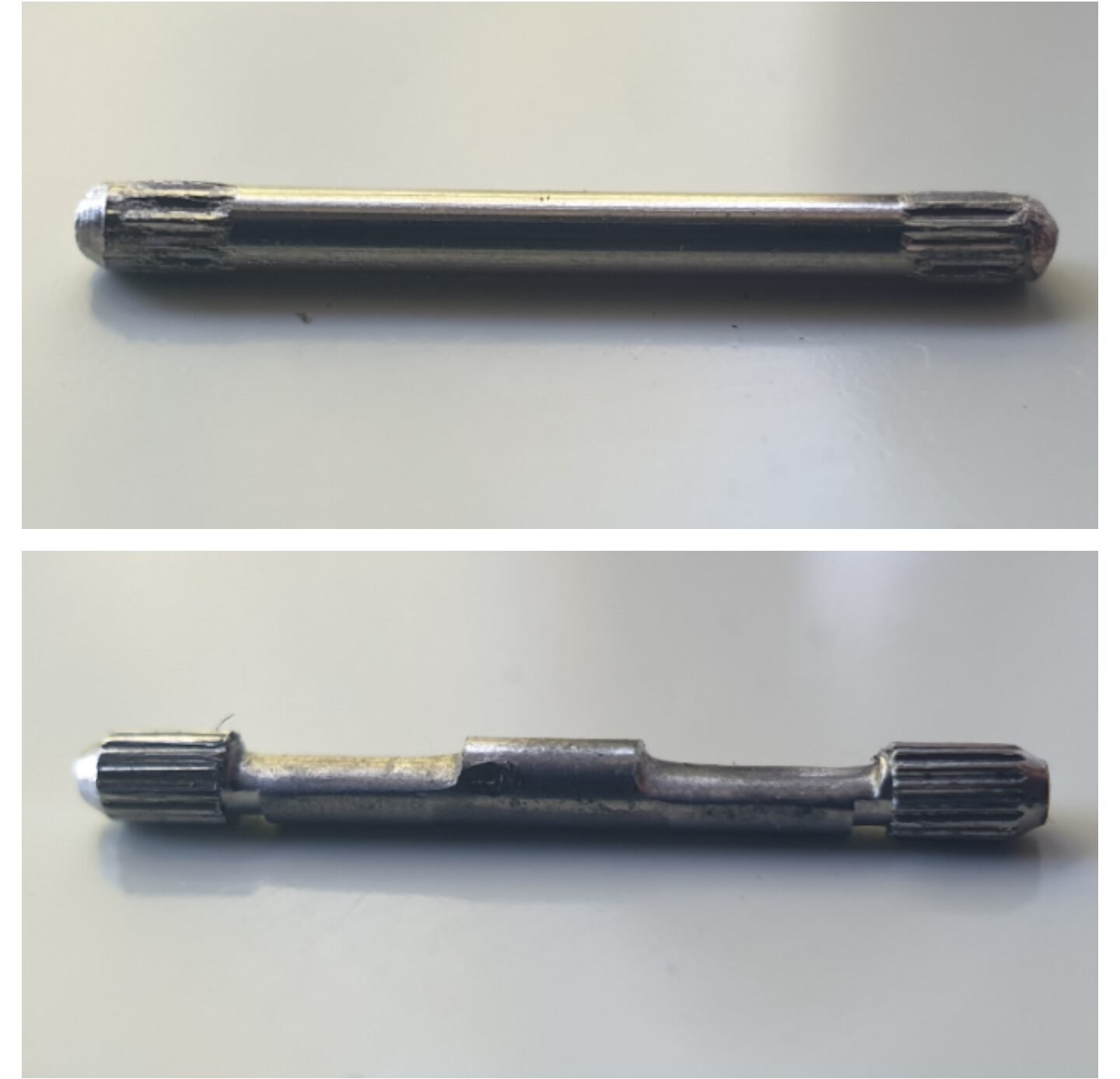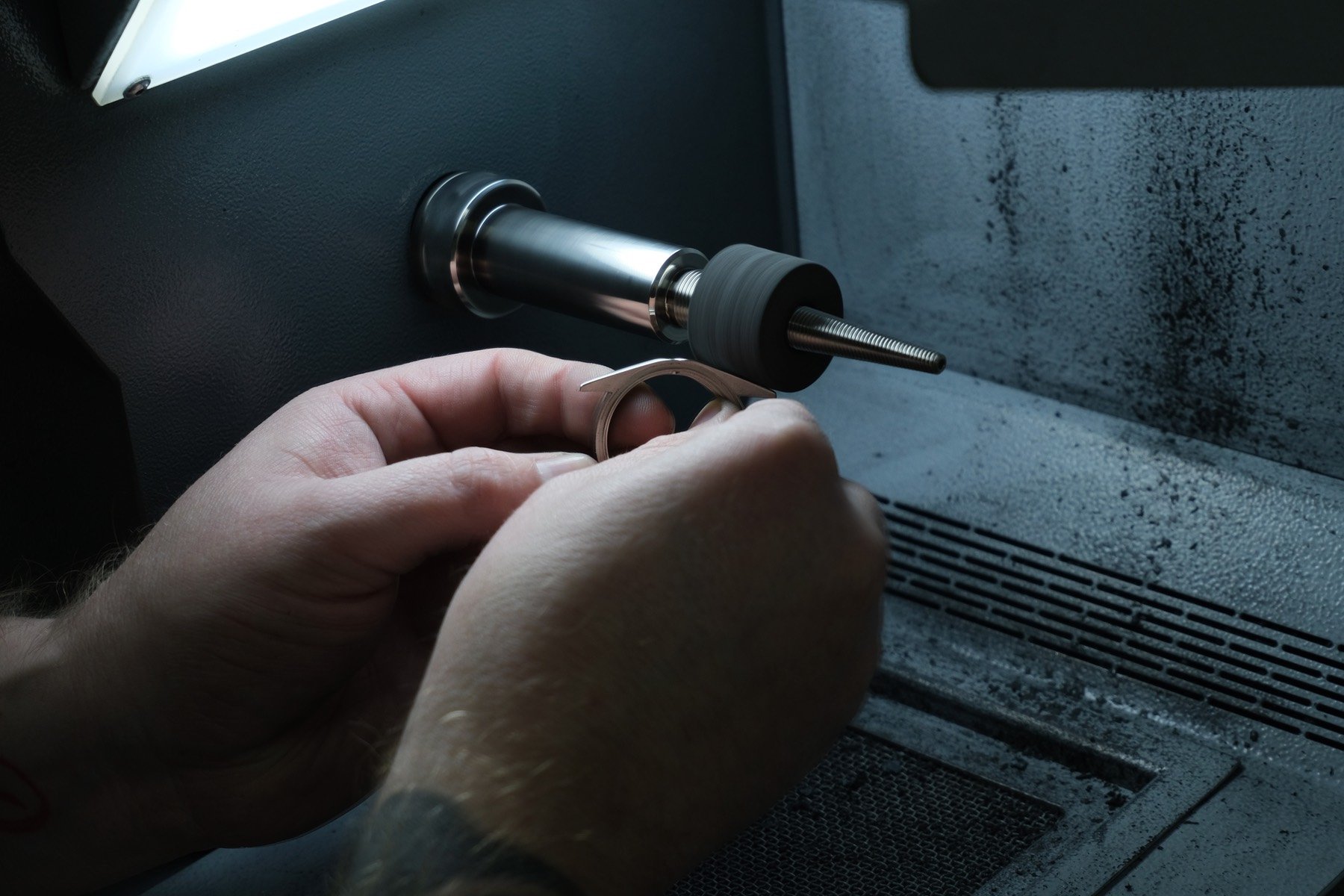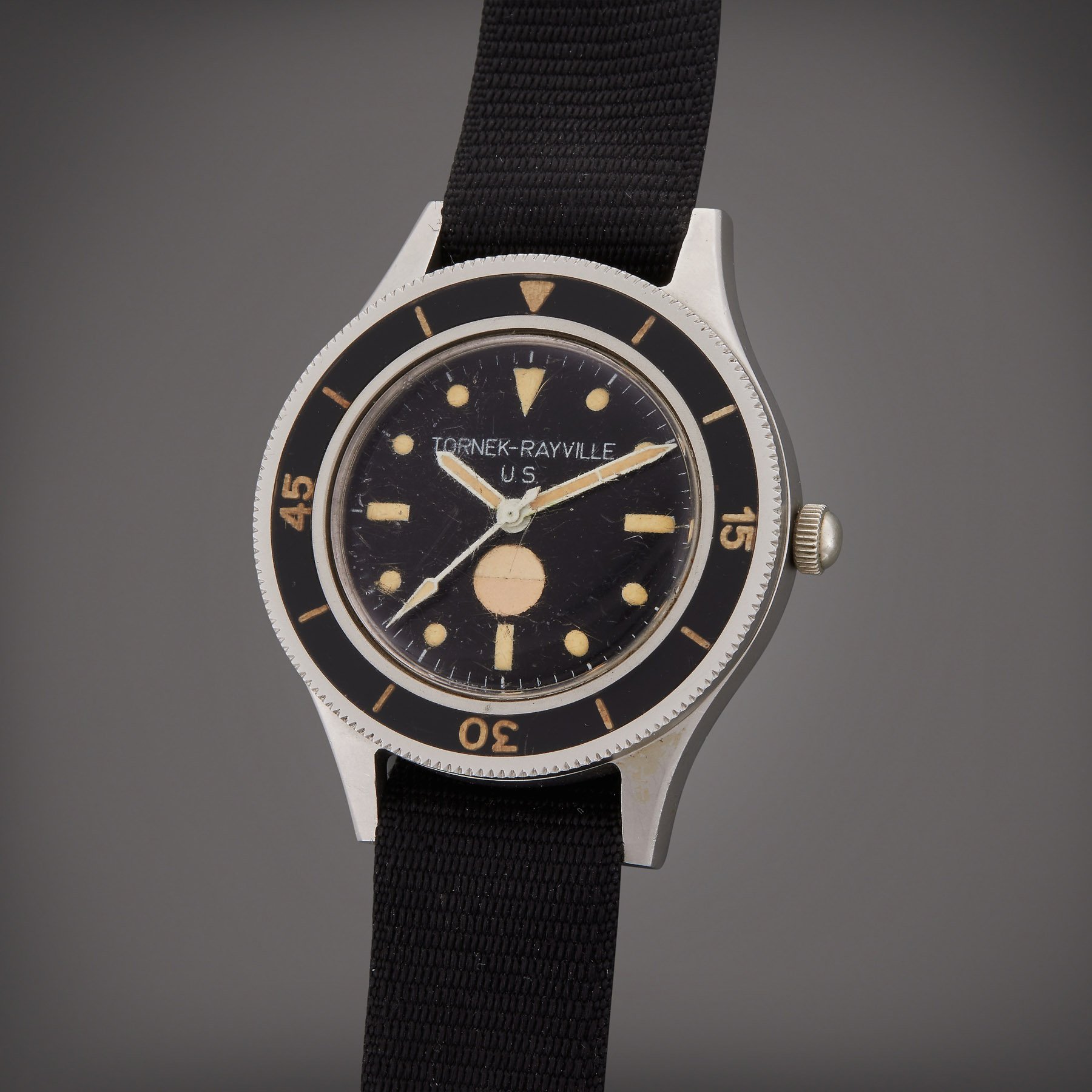To Restore Or Not To Restore: What Kind Of Watch Restoration Can And Should You Get Done?
One of the major appealing factors of vintage watches is the way they show their age. Often called patina, it encompasses the subtle marks that hint at the many adventures the watch has been on — yellowed lume, a scratch here and there, maybe some discoloration of the dial or fading of the bezel, and so on. Modern watch restoration technology, however, allows us to turn back the clock. We can make vintage watches look new or even aged precisely the way we want them.
That raises some questions. What kind of restoration can be done nowadays? And, of equal importance, should you do it? In this article, I will show some examples and try to help you answer that question for you and your specific vintage watch.
Technical watch restoration: Servicing and part replacement
Let’s start with the most basic of all restorations — movement servicing. I think this one is quite simple. If you intend to use and wear the watch, getting it serviced at the recommended interval is always advisable. Especially if you have a rare vintage watch for which parts may not be readily available, regular servicing can prevent the parts from wearing out. This means you can keep it running on its original movement parts for longer. The only situation in which I wouldn’t service a watch is if it is merely displayed museum-style, never used.
Things can quickly get more complicated though. What if your watchmaker calls you with the question: “Part X is worn out, do you want me to replace it?” Now we are getting into a more delicate realm. Some parts are commonly replaced during every service, while others are crucial to the character of the watch.
The crystal, for instance, is a typical part that often gets replaced. Most older watches have had their crystals swapped at some point, so it usually doesn’t hurt to do it again unless you know the crystal to be factory original. But what about the dial? How about the hands? I much prefer to see aging effects on them over having them replaced. And if they absolutely must be replaced, I would always seek out period-correct parts. I wouldn’t want a set of Super-LumiNova hands in my 1970 Speedmaster.
Aesthetic watch restoration: Reluming
As a vintage lover, I enjoy beautifully discolored lume. Tritium from cream to yellow, radium from pumpkin to brown — I love it! Unfortunately, much like people, not all lume ages gracefully. It may crumble, go black or overly puffy, or stain unattractively. In other cases, watches would sometimes get relumed when the lume lost its potency. This was often done very coarsely, resulting in messy dials.
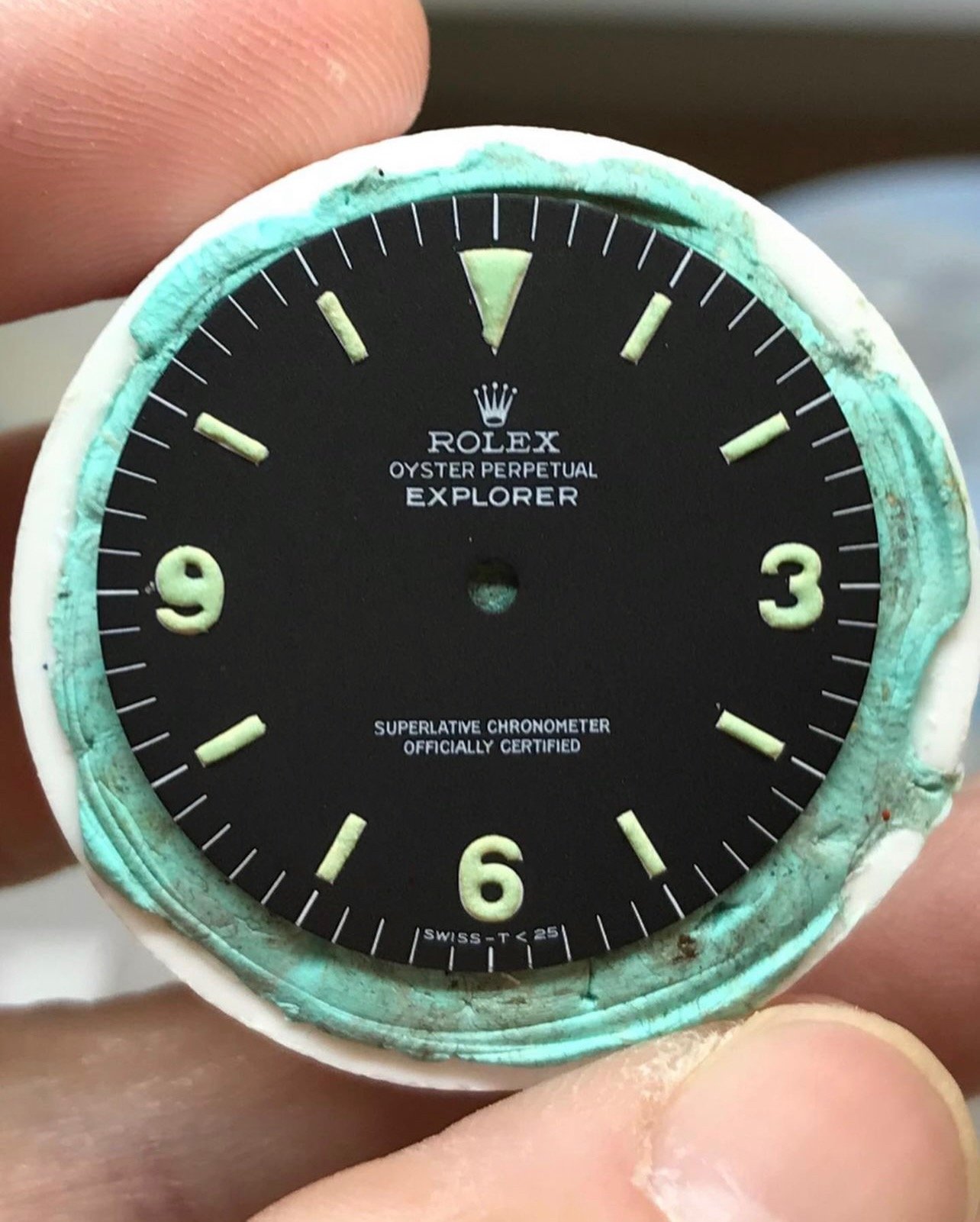
Before: look at the terrible earlier reluming job. This is a clear candidate for restoration. — Image courtesy of James Hyman
Today, there are absolute artists who can masterfully relume your vintage watch. James Hyman (The Alchemist Relumer) is a great example. He developed the skillset to apply lume with the same (or sometimes greater) precision as it was done in the factory. People like James can recreate any color you like. They can even simulate the quick-fading luminescence of aged tritium. Lastly, they can weather the new lume to make it look genuinely old. The result is often indistinguishable from the prettiest of patinas.
Things get tricky here. Beautifully discolored lume is a value-adding feature in vintage watches, so a restoration like this can be used to trick people into overpaying. My view is that I would only do it on watches that have issues that need addressing, such as flaking lume or an ugly earlier reluming job. This, however, is a very personal choice that you can only make for yourself. I would also understand if you felt adding faux patina to a vintage watch feels disingenuous to you. Selling one as naturally aged is most certainly problematic.
Aesthetic watch restoration: Laser welding cases
Just like aged lume, signs of aging on watch cases can be highly attractive if they sit within a certain Goldilocks zone. A scratch here and there and a dent or two can tell a watch’s story beautifully. But what if your watch has suffered a really bad knock? Or what if it has been refinished to the point of losing its entire original shape?
Modern watch restoration techniques include laser welding new material onto the case. This way, the case is brought back to its original girth and then refinished. Magicians like Zimmerman Watch Repair can make completely ruined cases look brand new again. You can make that 1962 watch look like new old stock if you want. The question is: should you?
In some instances, you simply don’t have a choice. Steel-on-steel contact can cause pitting, for instance. I have seen watches with case backs that wouldn’t screw into the case anymore because of it. Craftspeople like Zimmerman can redo the threads and give the watch a new lease on life. It gets a little more tricky when you make an aged watch look brand new. In my days as a vintage dealer, I was once offered a Rolex GMT-Master ref. 1675 with a beautiful, heavily aged dial (likely due, in part, to some water intrusion at some point). The case, however, looked brand-spanking new. The mismatch was ridiculous and made the entire thing feel fake to me. Naturally, I passed on the opportunity to buy it. It is a fine line though, which I will come back to in a moment.
Functional watch restoration: Bracelet stretch
So, what if your vintage watch came on a steel or precious metal bracelet and it is worn out? Years of use combined with the potent abrasive agent that is skin grease with dust and sand can lead to bracelet stretch. I am sure you have seen those saggy bracelets on some vintage watches, exposing way too much skin between the links.
Most bracelets feature internal pins that hold them together. Those pins tend to wear out over time. Some bracelets, such as most Rolex bracelets, can be repinned. The whole thing is taken apart, and all the internal pins are replaced with new ones, reducing stretch and the risk of breakage. If the links themselves are also worn out, these can be (laser) welded back to their original shape. Skilled craftspeople can make a worn-out bracelet look and feel brand new once more.
So…should you get such watch restoration done?
As you can see, watches can be pretty far gone and still be restored to almost new. I think it is crucial, however, to consider why you may want to get certain watch restorations done. If an old watch is completely ruined and you see it as a fun challenge to bring it back, that makes a lot of sense. You could even justify it as good patronage, preserving a historical item for future generations in such cases.
If you love vintage but you just prefer pristine-looking watches, restoration can make sense. You could, essentially, recreate a stunning NOS watch if you wanted. But what if you decide to sell it at some point? In my view, you will have to disclose what you have done to the watch. A watch that looks like it spent 60 years in a safe will fetch far more than one that has been worn and repaired over the years. These watch restorations have become so good that it is hard or even impossible to tell sometimes. Still, heavy restorations often reduce the collectability and value of a watch unless the watch was in terrible shape to begin with.
Generally speaking, the more collectible the watch, the less restoration work I would advise to get done. Originality and authenticity weigh heavier in rarer, more special watches.
How will we value patina in the future?
The above makes me wonder how we will value patina in the future. With watch restoration getting ever more advanced, this could normalize a beautiful patina and great overall condition. As more watches get restored and it becomes harder to tell, we may attribute less value to it. Or we may demand a higher standard across the board, accepting that we don’t know if it is authentic aging or a well-done restoration job.
I have seen watches known to be completely unworn for decades — examples of the elusive NOS vintage watch. The unique combination of pristine condition and aging effects like yellowed lume is a vintage geek’s dream. I think we are already at the point where you need the entire backstory — the so-called “provenance” — to be convinced that the watch was truly unworn.
When buying a vintage watch, look carefully at the consistency of the condition. The heavily aged dial and as-new case of the 1675 that I mentioned is a great example. It is a dead giveaway of restoration work. Also, always consider whether you attribute more value to authenticity or pristine condition. Lastly, be transparent when selling a watch that you have had restored. Be the change you want to see, right?
What do you think of watch restoration? Under what conditions would you get advanced restorations performed on your watches? Let us know in the comments below!

